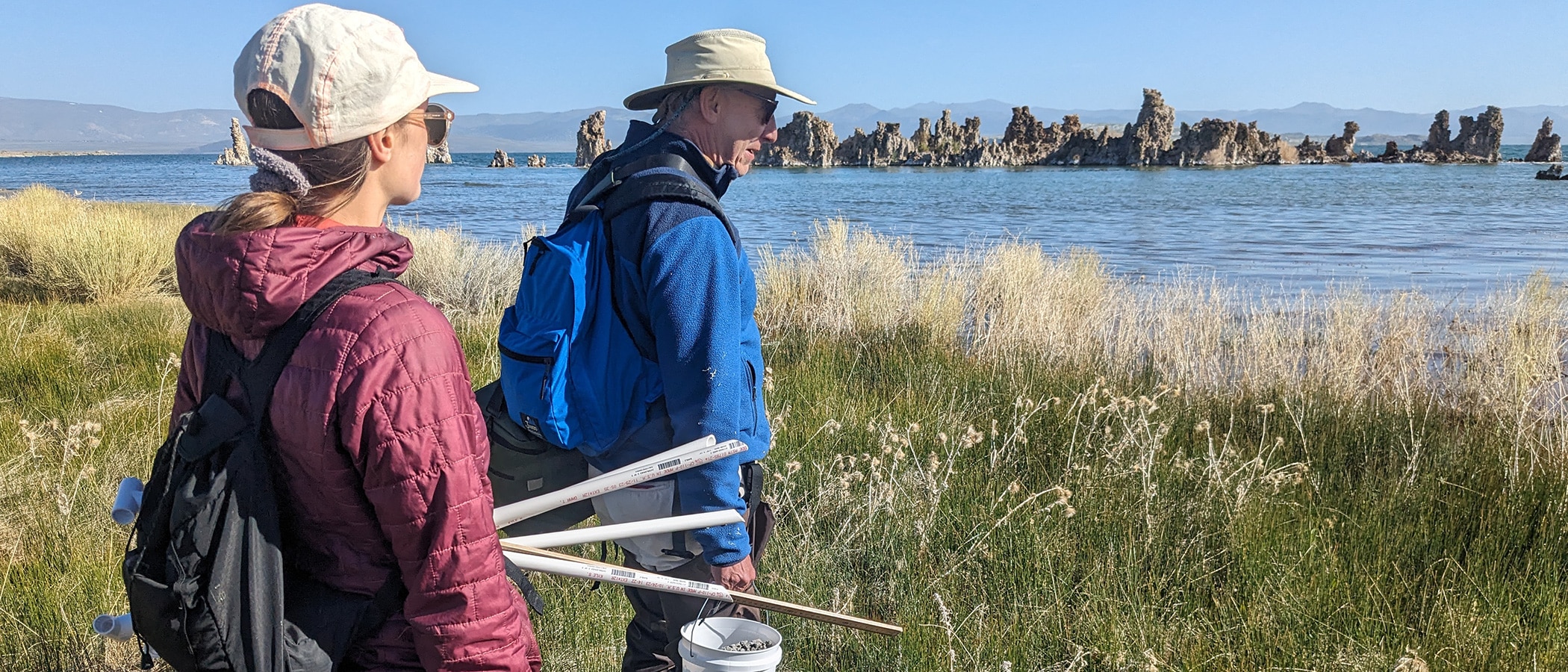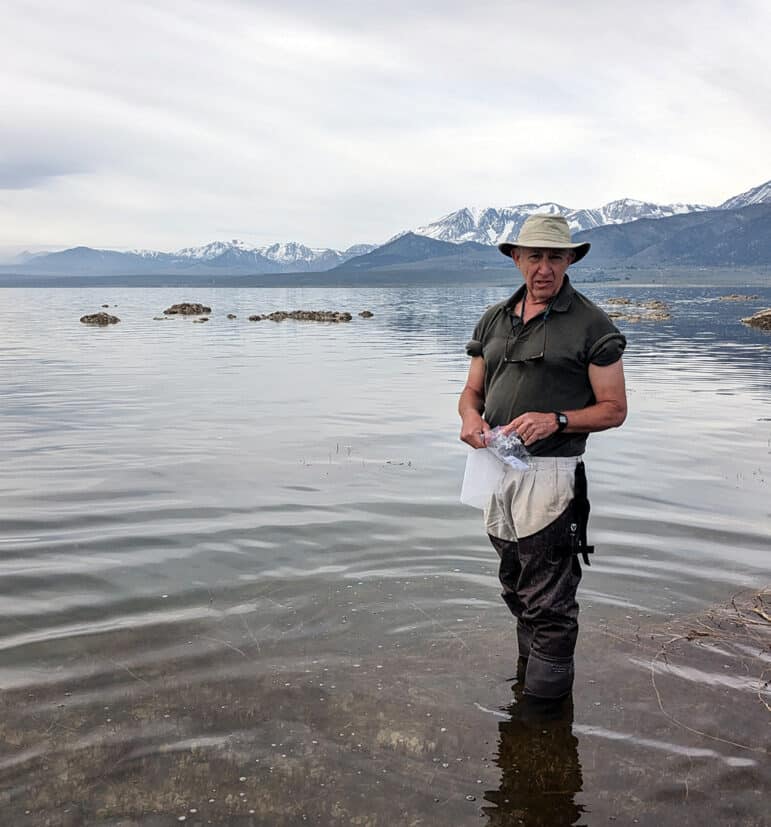
Productivity of alkali flies, brine shrimp, and birds threatened by increased salinity
Water diversions by the Los Angeles Department of Water & Power (DWP) began more than 80 years ago, depriving Mono Lake of water and upending the hydrologic balance between inflow and evaporation. The lake shrank rapidly, losing half its volume and declining 45 vertical feet by 1982.
As the lake shrank, the salts and minerals that make it unique remained abundant. And as a result, for every foot that diversions lowered the lake, salinity increased.
Mono Lake’s endemic brine shrimp and alkali flies are specially adapted to thrive in the lake’s salty waters which were 50 grams per liter (g/l) when diversions began. These two species, which each number in the trillions at Mono Lake, are a critical food resource for vast numbers of nesting and migratory birds, making the lake a site of international importance for bird migration. But as water diversions caused salinity to increase, the productivity of these essential species declined.
That’s why the California State Water Resources Control Board carefully considered ecological studies of the relationship between salinity and the health of brine shrimp and alkali flies in establishing its Mono Lake mandate. And though the status of Mono Lake is most often represented by lake level (6,383 feet above sea level this February), every foot of lake level has a corresponding lake salinity (81 g/l in February) that is directly relevant to ecosystem health.
DWP often claims the lake is healthy, an assertion it also made in the 1990s when the lake was at 100 g/l salinity. In doing so, DWP overlooks the history of lake diversions and the subsequent doubling of salinity DWP originally caused.
The State Water Board’s conclusions, however, are based on a comprehensive look at the relationship between salinity and productivity. Alkali fly studies are critical to this understanding.

Mono Lake expert entomologist Dr. David Herbst presented the conclusions of decades of work in several forums recently, recapping these core concepts. Alkali flies are well adapted to saline habitats, but the systems by which they filter salts from their bodies have to work harder as salinity increases, leaving less energy for other processes.
Herbst’s work shows that this leads to a number of negative consequences. At higher salinities flies have reduced rates of larval growth, reduced larval survival, and prolonged development periods. Pupae and adult flies also have smaller body sizes. Adult fecundity and reproductive success is impaired. Add it all up and the studies show that alkali fly population productivity decreases significantly as salinity increases.
Herbst’s work has quantified these impacts for different lake salinities and associated lake levels. A key takeaway: As impressive as the bands of alkali flies you might see today at South Tufa are, their size and numbers are far smaller than they were before DWP water diversions began.
Productivity of the alkali flies is a key consideration of the Public Trust lake level established by the State Water Board. In the 1990s, the State Water Board learned that fly productivity was less than half of what it had been before diversions. Ultimately the Board determined in its decision that a lower salinity (corresponding to a higher lake) was necessary to “maintain the aquatic productivity of the lake in good condition.”
The Board’s requirement that Mono Lake be managed at a healthy lake level is as much a salinity requirement as it is a physical elevation requirement. When you visit the lake, the yet-to-be achieved mandate for the surface to be averaging 6,392 feet above sea level is noted on trailside signs and not too hard to imagine. That translates to a lake salinity of about 68 g/l. When the day comes that the lake has recovered to that level, out in the briny waters, alkali flies will be able to put more energy into growing faster, getting bigger, and reproducing more successfully than we’ve seen in many a decade.
This post was also published as an article in the Winter & Spring 2025 Mono Lake Newsletter. Top photo by Robbie Di Paolo.
